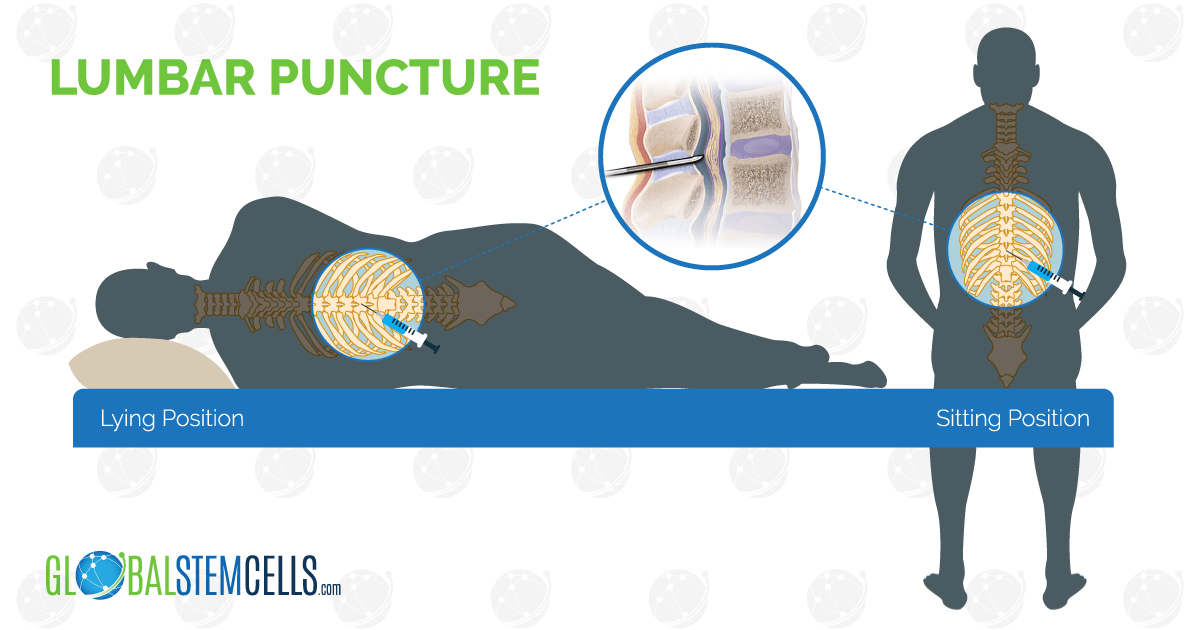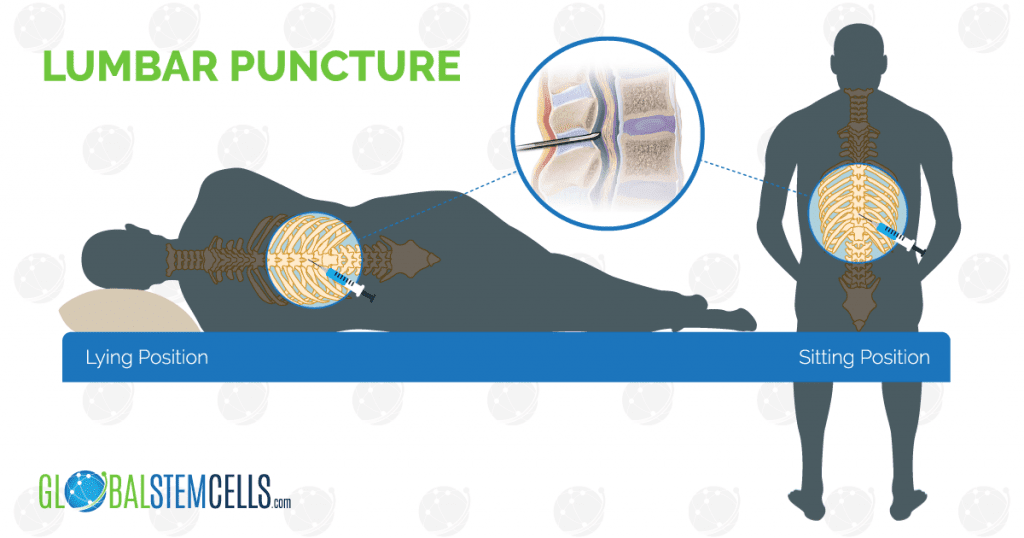What is a Lumbar Puncture?
A Lumbar Puncture (LP), also known as an intrathecal injection, is performed in the lower back (lumbar region), often to draw cerebrospinal fluid (the fluid that surrounds the brain and spinal cord) and sometimes to introduce anesthesia and medication into the fluid.
Why are Lumbar Punctures Necessary?
In regenerative medicine, LP is done in order to inject stem cells into the cerebrospinal fluid (CSF) to treat various neurological conditions such as Multiple Sclerosis, Spinal Cord Injuries, Brain Injuries, Cerebral Palsy and Optic Nerve Disorders. This is a very effective and safe way to inject stem cells directly into the central nervous system. Once into the CSF, stem cells are able to go to the injury site by following the chemotactic signals released by the injured part of the nervous system. Moreover, certain proteins (cytokines and growth factors) from the CSF help stem cells to differentiate into specialised neurons, astrocytes and glial cells.
How To Prepare for a Lumbar Puncture
Before doing the Lumbar Puncture we ask a few specific questions including:
- What kind of medications one has taken recently.
- If one is allergic to any medication or local anesthesia.
- If one has any bleeding or coagulation disorder and
- The patient may be asked not to eat or drink anything for a certain period of time before the procedure.

What Happens During a Lumbar Puncture?
The Patient will lie on a bed on his/her side with his/her knees drawn up toward their chest. In some cases, the patient may be asked to sit on their back with the neck bent forward.
A local anesthetic drug is injected into your lower back to numb the puncture site before the needle is inserted. The local anesthetic will sting briefly as it’s injected. It will help to numb the injection site
A thin needle is inserted between the two lower vertebrae (lumbar region), usually L2-L3, through the spinal membrane (dura) and into the spinal canal which contains CSF. You may feel pressure in your back during this part of the procedure.
Once the needle is in place, you may be asked to change your position slightly.
A small quantity of fluid may be withdrawn for laboratory checkup (depending upon the condition), and stem cells are injected
The needle is removed, and the puncture site is covered with a bandage.
What Happens After a Lumbar Puncture?
Patients are advised not to take part in any exercise which may put strain on your lower back and have a rest for few hours after the procedure. You will return to your room after the injection and will be advised to take extra precautions by the doctors if required.
Possible side effects/complications include:
- Headache: Headache is most common side effect of Lumbar Puncture but, in case it happens, it would be temporary and generally gets treated with simple pain medications.
- Fever: Some patients may have a mild fever after the procedure but that is also treated with simple analgesics or is relieved by itself within a day or two.
- Lower Back Pain: Some patients may experience mild lower back pain, generally at the injection site, due to the needle, but it is temporary and is relieved within the next 24-48 hours.
- Swelling and Bruise: Some patients may experience mild bruising or swelling at the injection site which is due to the leakage of CSF and it is nothing to worry about. It is also relieved in next few days and does not require any medications.
There are few extremely rare complications which may occur as a result of LP which include infection of meninges (meningitis) or bleeding inside the nervous system but these complications are extremely rare and overall LP is considered as a very safe procedure. In our practice we have never seen any major or life threatening complication due to a Lumbar Puncture injection.
Source: U.S National Library of Medicine



 English
English